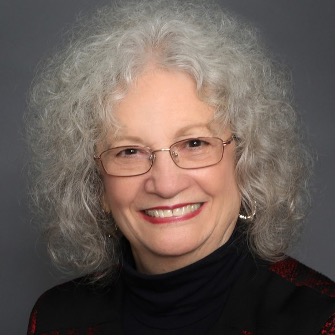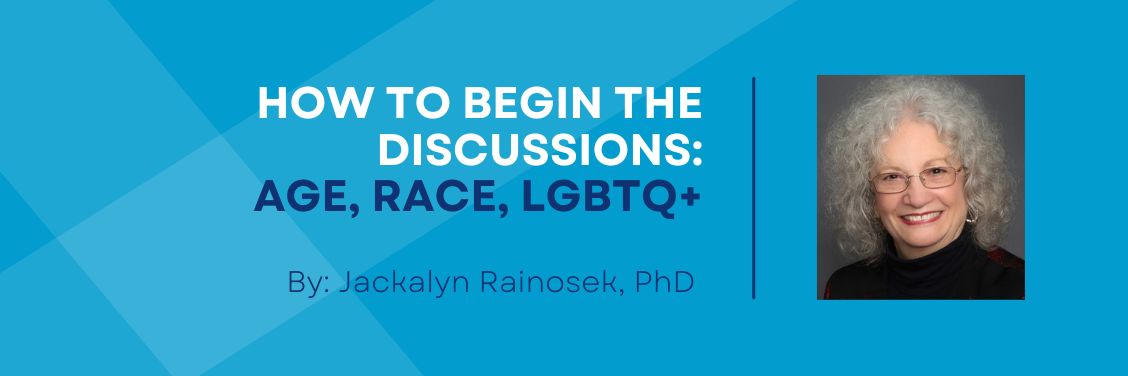Questions to Ask in the Boardroom
- How does your board handle discussions about age, race, or the LGBTQ+ community, since these groups help to diversify a board?
- What are old and new baselines for boards to consider about age, race, and the LGBTQ+ community as they diversify the board?
The Establishment of Old and New Baselines for Establishing Diversity on a Board
The original guidelines, or baselines, are described in a book where the authors address separate areas (Miller, F. A., & Katz, J. H. 2002. The Inclusion Breakthrough : Unleashing the Real Power of Diversity. San Fransisco: Berrett-Kohler Publishers). The book also addresses what have emerged as new baselines in these areas. I have used their descriptions as a starting point and expanded upon them based on my own professional experience to provide the description of old and new baselines that will follow in this article.
Inclusion Breakthrough and Assessing Your Board Against the New Baselines
Before discussing the baselines in more detail, it is worth mentioning the idea of an “inclusion breakthrough.” To have an inclusion breakthrough, a board or the oversight of an organization must go beyond baseline actions and raise the bar on how policies and practices support individuals from a wide range of social identity groups. All people involved need to operate and perform at a new level of contribution and competency. This can happen if board members understand that there are different diverse groups that need to be considered. The remainder of this article discusses three different groups.
Age
The old baselines for addressing age groups were started by organizations recruiting young people since they realized a younger workforce would stay longer. After realizing the loss of accumulated wisdom and experience that resulted from this policy, they stopped casting out people 50 years old and older. Prior to this decision, 45-year-old people were considered old. Those over 50 found ways to conceal their age and were concerned whether they would receive severance packages if they were fired just before they were eligible for retirement.
For boards, the baseline has shifted from 50 to 70 years of age, but even with this shift they are still losing the significant knowledge of those over 70 in the workplace. Current boards also often shy away from inviting younger people onto their board. They assume that young people will not be able to contribute to the board due to their limited knowledge and experience.
New baselines address both sides of this equation by being clear how young and older members have value to boards and organizations. When young people are moved up as quickly as possible, they find meaningful work and stay in an organization. Young people see themselves as investments in the future of the organization and require pay for expectations, since they see pay for performance as an old practice that gives them limited opportunities. They have been given pay for potential talent with the expectation that salaries and compensation be adjusted if performance does not follow. The attitude of the younger workforce is “pay me now and let me deliver.”
If board members learn to appreciate what a younger person can contribute, then there is no issue with younger members joining. When boards choose younger members than a more diverse perspective is present on the board.
Extended retirement age allows organizations to retain and engage the talent of older contributors. This decision includes 50-and-over people, and they are recognized as a “high potential” group. Studies show lower absenteeism and longer tenure expectations exists with people over the age of fifty. These older workers can provide knowledge that has accumulated over time. Various issues that boards face today can benefit from the history of older members who have lived through a number of changes in their careers.
African Americans, Black People, and People of Color
The original baselines for these groups were focused on establishing proactive retention and recruitment efforts. To retain and establish diversity, boards and organizations used recruiters, community outreach, and networks to support the hiring of these groups or the selection of these groups for board membership. Their method was to establish a pipeline that over time would affect the numbers of people in these groups at all levels. Progressively, boards and organizations realized that change was not happening fast of enough.
New baselines focus on creating a critical mass at all levels, which guarantees that all groups have multiple role models and peers. Inclusion of people of multiracial identity is important since many people do not consider themselves solely as one race. Multi-racial employees and board members are a part of unique social identity groups.
In the past, boards and organizations chose people that could assimilate into the white culture. Today, two-way mentoring and support networks provide guidance to support individuals to bring their unique knowledge and experience from their identity groups. These individuals are developed through vital career development, inclusion, and organizational success. Boards will lose the opportunity to understand the organizations they serve if they do not represent the diversity of these organizations as well as the diversity of their customers.
LGBTQ+
Organizations and boards find this area difficult to address, since members of the LGBTQ+ community are concerned whether they will be accepted if they are honest about themselves. The limiting factor is boards and organizations have been known to look at these groups through a moral lens rather than focusing on the productivity and opportunity LGBTQ+ members bring to boards or organizations. LGBTQ+ members cannot be ignored since they form a large customer base for public and private businesses. They need to have representation on the boards that have oversite of these businesses.
Old baselines began to set the priority that work environments needed to provide a safe place for LGBTQ+ employees, and boards and organizations made this a business imperative. Far too many experiences occurred that were hostile to LGBTQ+ staff, and derogatory remarks plus coming out at work could affect career opportunities and promotions. To counter these negative effects, efforts were made to provide benefits to LGBTQ+ staff, such as domestic partner benefits equivalent to those of other employees and board members.
Continued efforts to respect all human beings have led organizations and boards to establish new baselines. Companies now focus on welcoming partners/spouses at company functions and emphasize an inclusive environment. A board needs to convey the same message to members that have partners/spouses that are a part of the LGBTQ+ community. If organizations want their employees to be able to talk openly with colleagues about the sickness or death of a partner or spouse, or about weddings and breakups, then boards need to do the same thing. Boards and organizations now incorporate lesbian, gay, bisexual, transgender, or queer culture into organizational events, which means they address notable events that are part of the LGBTQ+ community. Many organizations provide medical coverage that considers the unique needs of lesbian, gay, bisexual, transgender, or queer people, and boards need to understand the significance of having this kind of medical care for employees. Another factor to consider is that board members often have colleagues and friends in the LGBTQ+ community. These members may the best individuals to convey what it would mean to provide safe and respectful membership on the board. They can also show how LGBTQ+ board members would feel comfortable in talking about their experiences, families, and friends with other board members.
Going forward, organizations and boards must learn about local and federal laws and guidelines that support exclusion rather than inclusion and work to counter them. It is also essential for them to follow the leadership of local and national LGBTQ+ organizations and adopt non-discrimination policies around employment, housing, credit, and education. These kinds of actions show LGBTQ+ staff and members that they are valuable individuals to organizations and boards.
More Questions for Board Members to Consider:
- What did board members learn from reading about the old and new baselines for age and how will that affect their choice of board members?
- How will board members establish a board environment where African Americans, Black People, and People of Color find ways to contribute to strategy and discussion of the board?
- What will board members need to consider from this article to be able to support LGBTQ+ community members to join the board?

ABOUT JACKALYN RAINOSEK, PHD
Dr. Jackalyn Rainosek is CEO and Co-Founder of DTP Leadership Group, as well as founder and principal of DTP Business Strategies. She has worked extensively with a wide range of Leaders as they make strategic decisions in ever-changing circumstances to achieve extraordinary results and increase profitability. As a senior business consultant and marketing strategist Dr. Rainosek works with business owners and corporate executives to generate optimal results and exponential growth. Dr. Rainosek guides organizations to develop more appropriate leadership styles, enhance cultural competency (through diversity, equity, and inclusion initiatives), and improve levels of trust and cooperation both internally and with the customer base.
Disclaimer: The views and opinions expressed in this blog are solely those of the authors providing them and do not necessarily reflect the views or positions of the Private Directors Association, its members, affiliates, or employees.

